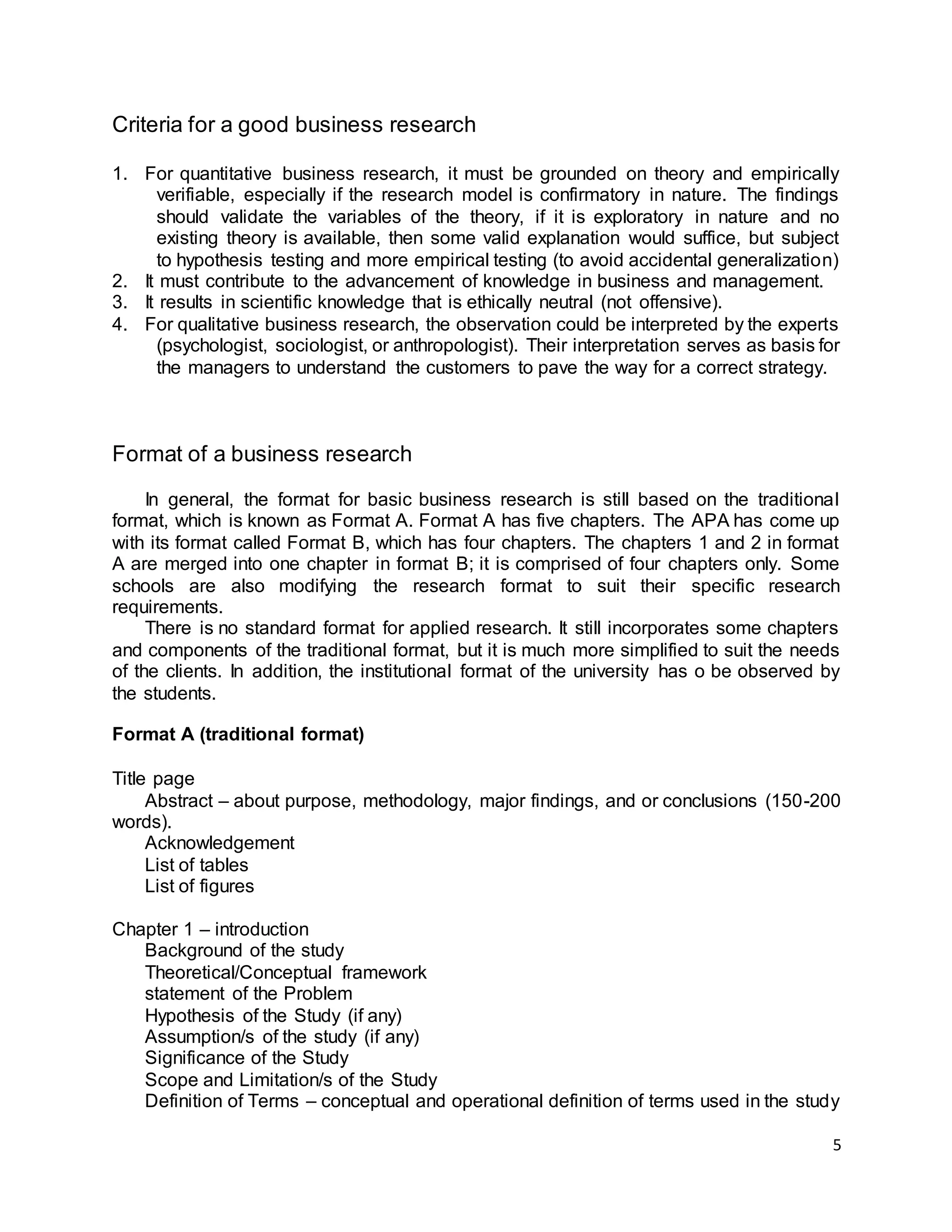This document provides an overview of business research, including defining business research, distinguishing between qualitative and quantitative research, the difference between basic and applied research, kinds of business research, criteria for good research, and research formats. Specifically, it defines business research as scientific research addressing firm or industry concerns. It also describes qualitative research using observations or interviews versus quantitative research using surveys, as well as how the two can be combined through triangulation. The document outlines various types of conclusive and exploratory business research and their purposes.







